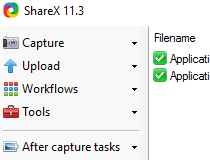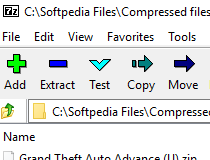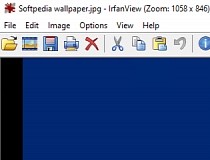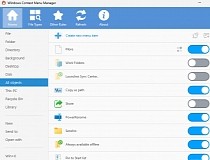Find and manage duplication files on the file system. #File finder #File manager #Manage duplications #Duplicate #Finder #Manager
dupfind is a Python utility that allows you to find duplicated files and directories in your file system.
Show how utility find duplicated files:
By default utility identifies duplication files by file content.
First of all - create several different files in the current directory.
>>> createFile('tfile1.txt', "A"*10) >>> createFile('tfile2.txt', "A"*1025) >>> createFile('tfile3.txt', "A"*2048)
Then create other files in another directory, one of them to be the same as already created ones.
>>> mkd("dir1") >>> createFile('tfile1.txt', "A"*20, "dir1") >>> createFile('tfile2.txt', "A"*1025, "dir1") >>> createFile('tfile13.txt', "A"*48, "dir1")
Look into the directories contents:
>>> ls() === list directory === D :: dir1 :: ... F :: tfile1.txt :: 10 F :: tfile2.txt :: 1025 F :: tfile3.txt :: 2048
>>> ls("dir1") === list dir1 directory === F :: tfile1.txt :: 20 F :: tfile13.txt :: 48 F :: tfile2.txt :: 1025
We see, that "tfile2.txt" is same in both directories, while "tfile1.txt" - has the same name, but differs in size. So utility must identify only "tfile2.txt" as a duplication file.
We force output results with "-o " argument to outputf file, and pass testdir as directory that is looking for duplications.
>>> dupfind("-o %(o)s %(dir)s" % {'o':outputf, 'dir': testdir})
Now check the results file for duplications.
>>> cat(outputf) hash,size,type,ext,name,directory,modification,operation,operation_data ...,1025,F,txt,tfile2.txt,.../tmp.../dir1,... ...,1025,F,txt,tfile2.txt,.../tmp...,...
Show quick/slow utility mode:
As mentioned above - utility identifies duplication files by file contents. This mode slows down the system and consumes a lot of system resources.
However, in most cases the file name and size is enough to identify the duplication. So in that case you can use quick mode --quick (-q) option.
So test the previous files in the quick mode:
>>> dupfind("-q -o %(o)s %(dir)s" % {'o':outputf, 'dir': testdir})
Now check the result file for duplications.
>>> cat(outputf) hash,size,type,ext,name,directory,modification,operation,operation_data ...,1025,F,txt,tfile2.txt,.../tmp.../dir1,... ...,1025,F,txt,tfile2.txt,.../tmp...,...
As we can see the quick mode identifies duplications correctly.
Let's show that there are cases when this mode can lead to mistakes. To do that let's add a file with the same name and size but different content and apply utility in both modes: >>> createFile('tfile000.txt', "First "*20,) >>> createFile('tfile000.txt', "Second "*20, "dir1")
Now check the duplication results using default (not quick mode) ...
>>> dupfind(" -o %(o)s %(dir)s" % {'o':outputf, 'dir': testdir}) >>> cat(outputf) hash,size,type,ext,name,directory,modification,operation,operation_data ...,1025,F,txt,tfile2.txt,.../tmp.../dir1,... ...,1025,F,txt,tfile2.txt,.../tmp...,...
As we can see not-quick mode identifies duplications correctly.
Let's check duplications using the quick mode...
>>> dupfind(" -q -o %(o)s %(dir)s" % {'o':outputf, 'dir': testdir}) >>> cat(outputf) hash,size,type,ext,name,directory,modification,operation,operation_data ...,140,F,txt,tfile000.txt,.../tmp.../dir1,... ...,140,F,txt,tfile000.txt,.../tmp...,... ...,1025,F,txt,tfile2.txt,.../tmp.../dir1,... ...,1025,F,txt,tfile2.txt,.../tmp...,...
As we can see wrong duplications are found using the quick-mode.
Cleanup the test >>> cleanTestDir()
Show how utility finds duplicated directories:
Utility identifies duplicated directories as directories, all files of which are duplicated and all inner directories are also duplicated directories. First compare 2 directories with the same files.
Create directories with the same content.
>>> def mkDir(dpath): ... mkd(dpath) ... createFile('tfile1.txt', "A"*10, dpath) ... createFile('tfile2.txt', "A"*1025, dpath) ... createFile('tfile3.txt', "A"*2048, dpath) ... >>> mkDir("dir1") >>> mkDir("dir2")
Confirm that the directories' contents are really identical
>>> ls("dir1") === list dir1 directory === F :: tfile1.txt :: 10 F :: tfile2.txt :: 1025 F :: tfile3.txt :: 2048
>>> ls("dir2") === list dir2 directory === F :: tfile1.txt :: 10 F :: tfile2.txt :: 1025 F :: tfile3.txt :: 2048
Now run the utility and check the result file: >>> dupfind("-o %(o)s %(dir)s" % {'o':outputf, 'dir': testdir}) >>> cat(outputf) hash,size,type,ext,name,directory,modification,operation,operation_data ...,D,,dir1,... ...,D,,dir2,...
Compare 2 directories with the same files and dirs.
Create new directories with the same content, but different names in previously created directories.
So for directories to be interpreted as duplications - they don't need to have the same name, but the identical content.
Add 2 identical directories to the previous ones.
>>> def mkDir1(dpath): ... mkd(dpath) ... createFile('tfile11.txt', "B"*4000, dpath) ... createFile('tfile12.txt', "B"*222, dpath) ... >>> mkDir1("dir1/dir11") >>> mkDir1("dir2/dir21")
Note that we added two directories with same contents, but different names. This should not break duplications.
>>> def mkDir2(dpath): ... mkd(dpath) ... createFile('tfile21.txt', "C"*4096, dpath) ... createFile('tfile22.txt', "C"*123, dpath) ... createFile('tfile23.txt', "C"*444, dpath) ... createFile('tfile24.txt', "C"*555, dpath) ... >>> mkDir2("dir1/dir22") >>> mkDir2("dir2/dir22")
Confirm that directories' contents are really identical
>>> ls("dir1") === list dir1 directory === D :: dir11 :: -1 D :: dir22 :: -1 F :: tfile1.txt :: 10 F :: tfile2.txt :: 1025 F :: tfile3.txt :: 2048 >>> ls("dir2") === list dir2 directory === D :: dir21 :: -1 D :: dir22 :: -1 F :: tfile1.txt :: 10 F :: tfile2.txt :: 1025 F :: tfile3.txt :: 2048
And contents for inner directories
First subdirectory:
>>> ls("dir1/dir11") === list dir1/dir11 directory === F :: tfile11.txt :: 4000 F :: tfile12.txt :: 222 >>> ls("dir2/dir21") === list dir2/dir21 directory === F :: tfile11.txt :: 4000 F :: tfile12.txt :: 222
Second subdirectory:
>>> ls("dir1/dir22") === list dir1/dir22 directory === F :: tfile21.txt :: 4096 F :: tfile22.txt :: 123 F :: tfile23.txt :: 444 F :: tfile24.txt :: 555 >>> ls("dir2/dir22") === list dir2/dir22 directory === F :: tfile21.txt :: 4096 F :: tfile22.txt :: 123 F :: tfile23.txt :: 444 F :: tfile24.txt :: 555
Now test the utility.
>>> dupfind("-o %(o)s %(dir)s" % {'o':outputf, 'dir': testdir})
Checks the results file for duplications.
>>> cat(outputf) hash,size,type,ext,name,directory,modification,operation,operation_data ...,D,,dir1,... ...,D,,dir2,...
NOTE:
Inner duplication directories are excluded from the results:
>>> outputres = file(outputf).read() >>> "dir1/dir11" in outputres False >>> "dir1/dir22" in outputres False >>> "dir2/dir21" in outputres False >>> "dir2/dir22" in outputres False
Utility accepts more than one argument as directories list:
Use previous directory structure to prove this:
Now pass to utility "dir1/dir11" and "dir2" directories: >>> dupfind("-o %(o)s %(dir1-11)s %(dir2)s" % { ... 'o':outputf, ... 'dir1-11': os.path.join(testdir,"dir1/dir11"), ... 'dir2': os.path.join(testdir,"dir2"),})
Now check the result file for duplications.
>>> cat(outputf) hash,size,type,ext,name,directory,modification,operation,operation_data ...,D,,dir11,.../tmp.../dir1,... ...,D,,dir21,.../tmp.../dir2,...
DUPMANAGE UTILITY:
dupmanage utility allows you to manage duplication files and directories of your file system with csv data file.
Utility use csv-formatted data-file to process duplication items. Data file must contain the following columns:
* type * name * directory * operation * operation_data
Utility supports 2 types of operations with duplication items:
* deleting ("D") * symlinking ("L") only for UNIX-like systems
operation_data is only used for symlinking operation and must contain the path to symlinking sorce item. Show how utility manages duplications:
To show - use previous directory structure and also add several duplications:
Create a file in the root directory and the same file in another catalog. >>> createFile('tfile03.txt', "D"*100) >>> mkd("dir3") >>> createFile('tfile03.txt', "D"*100, "dir3")
Look into directories contents:
>>> ls() === list directory === D :: dir1 :: ... D :: dir2 :: ... D :: dir3 :: ... F :: tfile03.txt :: 100
>>> ls("dir3") === list dir3 directory === F :: tfile03.txt :: 100
We already know the previous duplications, so now we create csv-formatted data file to manage duplications.
>>> manage_data = """type,name,directory,operation,operation_data ... F,tfile03.txt,%(testdir)s/dir3,L,%(testdir)s/tfile03.txt ... D,dir2,%(testdir)s,D, ... """ % {'testdir': testdir} >>> createFile('manage.csv', manage_data)
Now call the utility and check result directory content:
>>> manage_path = os.path.join(testdir, 'manage.csv') >>> dupmanage("%s -v" % manage_path) [... [...]: Symlink .../tfile03.txt item to .../dir3/tfile03.txt [...]: Remove .../dir2 directory [...]: Processed 2 items
Review directory content:
>>> ls() === list directory === D :: dir1 :: ... D :: dir3 :: ... F :: tfile03.txt :: 100
>>> ls("dir3") === list dir3 directory === L :: tfile03.txt :: ...
System requirements
What's new in dupfinder 1.4.3:
- Comment useless for now output_format option for dupfinder utility.
dupfinder 1.4.3
add to watchlist add to download basket send us an update REPORT- runs on:
- Linux
- filename:
- dupfinder-1.4.3.tar.gz
- main category:
- Desktop Environment
- developer:
- visit homepage
ShareX 16.0.1
Zoom Client 6.0.3.37634
calibre 7.9.0
7-Zip 23.01 / 24.04 Beta
Microsoft Teams 24060.3102.2733.5911 Home / 1.7.00.7956 Work
IrfanView 4.67
Context Menu Manager 3.3.3.1
Bitdefender Antivirus Free 27.0.35.146
Windows Sandbox Launcher 1.0.0
4k Video Downloader 1.5.3.0080 Plus / 4.30.0.5655
- Bitdefender Antivirus Free
- Windows Sandbox Launcher
- 4k Video Downloader
- ShareX
- Zoom Client
- calibre
- 7-Zip
- Microsoft Teams
- IrfanView
- Context Menu Manager









